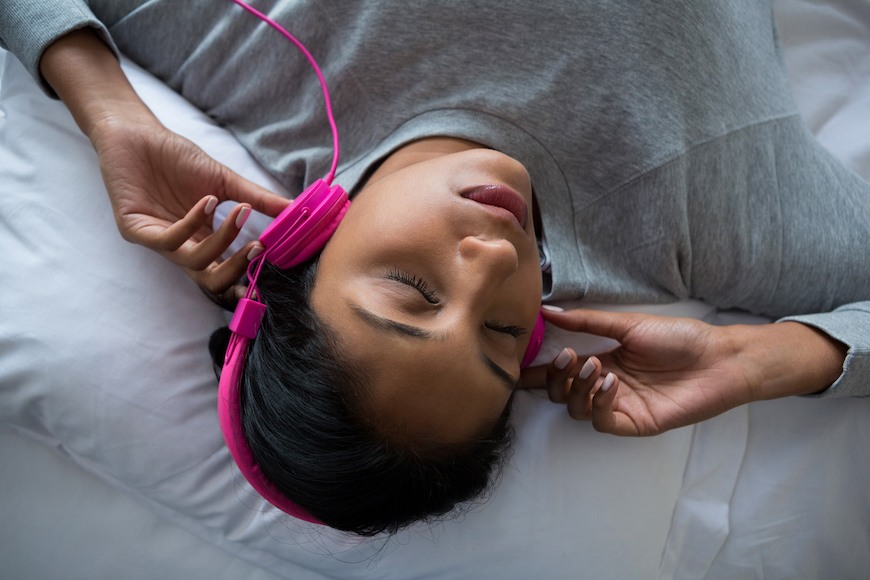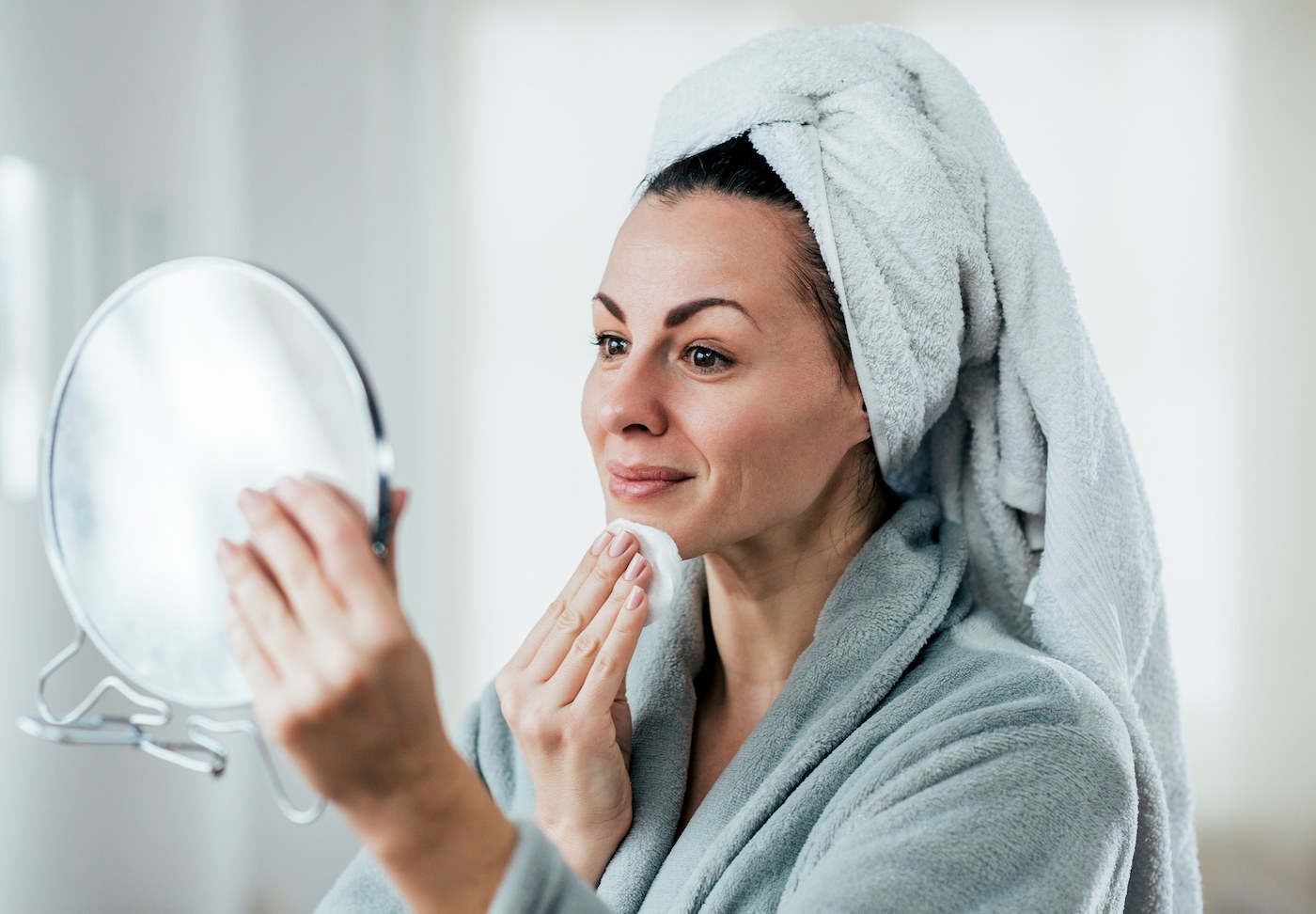
August 30, 2019 at 04:13PM by CWC
In the everlasting quest for a good night’s sleep, listening to white noise remains as one of the classic methods for knocking yourself out. But, “classic” can also mean “tired”—and not in the sought-after way that’ll help you doze. Also, it’s simply not for everyone, including yours truly. That’s why my ears perked when I heard about the (very millennial-sounding) pink noise sleep benefits. Just hearing that pink noise for sleep is a thing appealed to the side of me that still idolizes Barbie, can’t watch Legally Blonde enough, and downs rosé with gusto.
But, back to pink noise for sleep—what’s it even mean?
“Pink noise is similar to white noise but has more amplification of the lower tones,” says clinical psychologist, sleep expert, and author of The Women’s Guide to Overcoming Insomnia, Shelby Harris, PsyD. “It hasn’t caught on as much yet in the mainstream, but it does mask noise while having the memory and deep sleep enhancement that white noise itself doesn’t necessarily have.”
“[Pink noise] hasn’t caught on as much yet in the mainstream, but it does mask noise while having the memory and deep sleep enhancement that white noise itself doesn’t necessarily have.” —sleep expert Shelby Harris, PsyD
ADVERTISEMENT
ADVERTISEMENTKate Spade Autumn/Winter Sale |
Before you turn yourself on to this fabulous shade of sleep sounds, allow Dr. Harris to provide some deeper intel as to what distinguishes pink noise from all your other sound-masking tracks and apps.
Pink noise sounds a bit more natural to the ear than other sounds
Of course, this doesn’t mean a “sounds of the rainforest” breed of natural, just a little bit more soothing and balanced compared to the static of white noise. With white noise, the “sounds” of color are all mixed together to create one giant sonic barrier. Pink noise operates similarly, except the sounds at the lower end of the spectrum are louder, and the sounds at the higher end are softer.
This creates a gentle, less jarring sound that, to me, comes across like a waterfall or a light rainstorm, sans thunder.
Pink noise can facilitate deep and stable sleep
Pink noise and white noise both act as sound barriers that block out other noises when you’re snoozing. That’s important because sound itself doesn’t necessarily wake us—more often it’s the changes in sound that do the trick.
So, creating a sound barrier of relatively even and consistent noise effectively blocks out those changes, allowing you to enjoy uninterrupted sleep. White, pink, and brown noise all operate with the same goal here, but pink noise is especially great for slowing and steadying brainwaves, creating high-quality restfulness.
Playing pink noise while you sleep may help with memory recall
Deep non-rapid eye movement (NREM) sleep happens in the sleep cycle when the brain goes into the memory consolidation process. To that point, there’s an association with pink noise possibly helping with cognitive retention. For one 2017 study on the effects of pink noise on adults aged between 60 and 84, subjects were given a sham stimulation and a pink-noise-infused acoustic stimulation while they slept. Afterward they all completed memory recall tests, and retention improved up to three times for the pink noise sleep group.
Many of the studies on pink noise’s ability to improve cognition are incredibly small, meaning there’s still a lot of research to be done. Nonetheless, it might be worth playing some pink noise the night before a big presentation. Speaking of which…
In your waking hours, pink noise can be an aid to productivity
Pairing pink noise with office life may really amp up your work day. Not only does it drown out the grating chatter of coworkers, but it can also aid in sharpening your focus. One study even showed that pink noise reduces distractions in talking and pauses in writing.
To that end, I’ll say this: While more research continues to develop supporting the effectiveness of this specific shade of sound therapy, I’m playing pink noise on my headphones. And if I close my eyes, all I can really hear is the sound of soft waterfalls that makes me want to doze.
If you’re looking for a sleep strategy that’s pretty tried-and-true, counting sheep might actually work. And if you’re tossing and turning, tune into these relaxing sleep songs.
ADVERTISEMENT
ADVERTISEMENTSports Direct Free Delivery on All Orders! |
Author Mary Grace Garis | Well and Good
Selected by CWC
ADVERTISEMENT
ADVERTISEMENTUp to 30% off Gift Sets |







